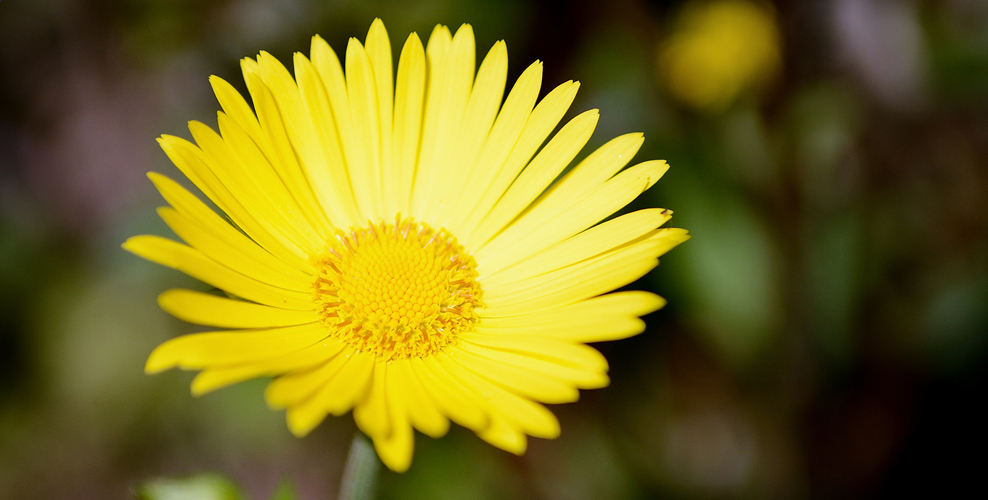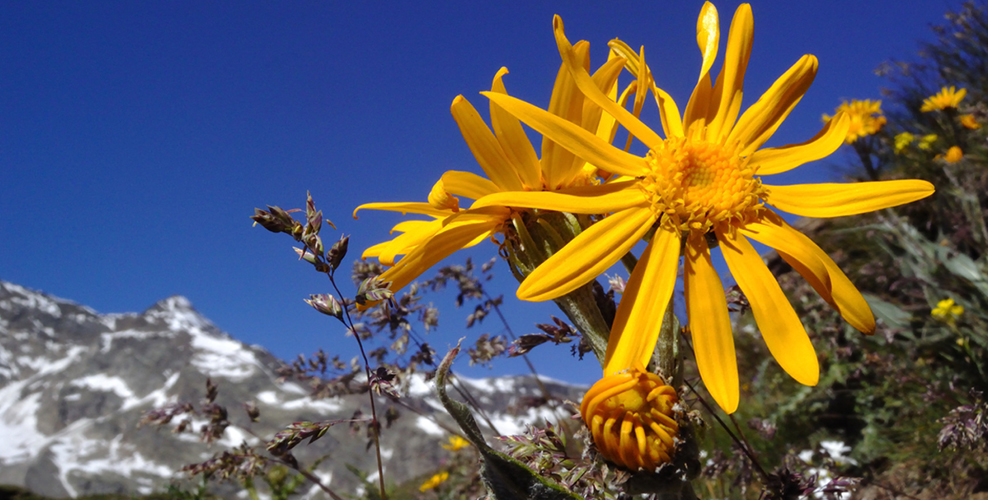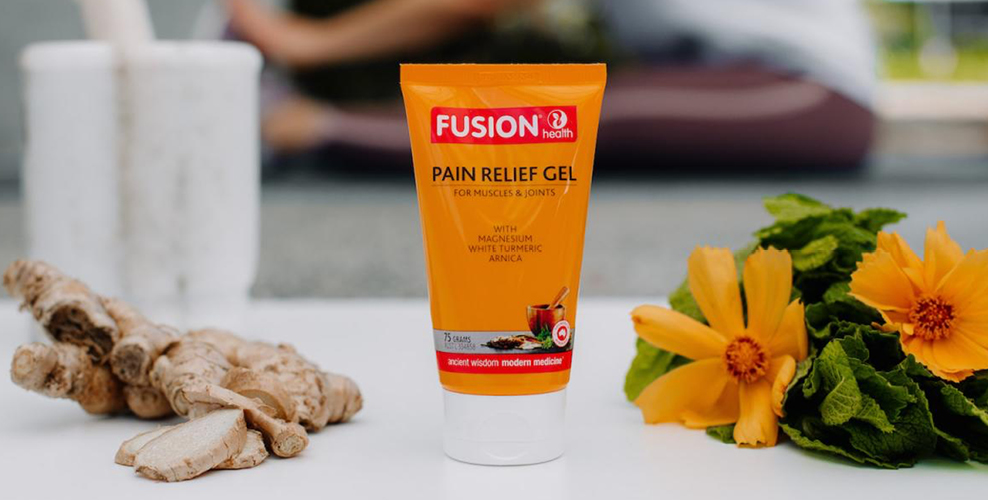All about arnica

What is arnica?
Arnica (Arnica montana) is a member of the Asteraceae or daisy family of plants1 that has an extensive history of therapeutic use in European herbal medicine.
It's also sometimes referred to by other common names, including leopard's bane, wolf's bane, sneezewort and mountain snuff1,2.
The arnica plant has bright yellow daisy-like flowers and elongated, egg-shaped leaves that have a furry or downy texture. It's the flowers that are used medicinally3.
How did arnica get its name?
There's some dispute about the origins of the plant's name. Some schools of thought say that the word 'arnica' is derived from the Greek word for 'lamb' (‘arnáki’) and is a reference to the plant's woolly leaves4.
Others believe that the name is derived from the Ancient Greek word ‘ptarmikḗ’. This word was used to refer to plants that make you sneeze, which arnica often does when you sniff its flowers5 - which also helps to explain its alternative common name, sneezewort!
Where does arnica come from?
The 'montana' part of arnica's botanical name is a reference to its preference for living in the mountains! It's native to cool, high-altitude, mountainous regions of Europe, as well as similar regions in northern Asia and Siberia5,6. There are also related species in other parts of the world, including parts of North America.

How long has arnica been used?
Arnica has been used medicinally since at least the 16th Century in Europe, and was even mentioned in the writings of Saint Hildegard of Bingen, a nun and mystic who lived in Germany between 1098 and 1179 and wrote extensively about medicinal plants.2
What are the benefits of arnica?
In Western herbal medicine arnica is traditionally applied topically to relieve muscle aches and pains, including mild muscle inflammation and symptoms of muscle sprain and strain.
An American herbal medicine text6 published nearly 100 years ago sums these traditional Western herbal medicine uses up nicely, saying that it's specifically indicated for 'Muscular soreness and pain from strain or overexertion', 'muscle pain that occurs when the limbs are moved' and muscle aches and pains that are the result of sudden jars or knocks.
Another traditional use of topically applied arnica in Western herbal medicine is for the relief of mild joint inflammation or swelling.

When should I use arnica?
Consider using topically applied arnica gel:
- To reduce myalgia (muscle aches and pains), based on its traditional use in Western herbal medicine - for example to reduce the symptoms of strained or sprained muscles
- To ease mildly inflamed joints and muscles, again based on its traditional use in Western herbal medicine
How does arnica work?
In Western herbal medicine, arnica is traditionally believed to work by acting as a counter-irritant, which is a substance that produces mild irritation and inflammation of the skin when applied topically, with the benefit of relieving pain in more deep-seated parts of the body like the muscles and joints.

Does arnica have any side effects?
As mentioned above, topically applied arnica has irritating effects on the skin6.
Full-strength preparations should therefore not be applied directly to the skin, so if you have some arnica flowers in your garden, don't be tempted to make a poultice or compress from it without diluting it significantly first!
At Fusion, we recommend using arnica in a gel format where it's prepared in a suitably dilute concentration to reduce the likelihood of irritation occurring.
For example, every gram of Fusion Pain Relief Gel contains the equivalent of 20mg of dried arnica flower extract. This concentration is based on the significant amount of dilution7 that's recommended in the traditional herbal literature when preparing arnica for topical use, for example for relieving muscle pain.
 Arnica is meant to be used topically. It should not be consumed as doing so can result in serious side effects1,6. (Homoeopathically prepared arnica is an exception to this rule as homoeopathic preparations are dilute enough for toxicity not to be a concern).
Arnica is meant to be used topically. It should not be consumed as doing so can result in serious side effects1,6. (Homoeopathically prepared arnica is an exception to this rule as homoeopathic preparations are dilute enough for toxicity not to be a concern).
Got more questions about arnica and whether it's suitable for you? Contact us here and we'll be delighted to answer them.
References:
- WHO Monographs on Selected Medicinal Plants. Geneva: World Health Organization, 2007.
- Widrig, R. et al. Rheumatol Int, 2007;27(6):585-91.
- Chevallier, A. Encyclopedia of Herbal Medicine. DK Publishing (Dorling Kindersley), 2016.
- McVicar, J. Jekka's Complete Herb Book. 2007.
- Kriplani, P. et al. J Pharm Pharmacol, 2017;69(8):925-45.
- Felter, H.W. The eclectic materia medica, pharmacology and therapeutics. Arizona: Southwest School of Botanical Medicine, 1922.
- Bone, K. & Mills, S. Principles and Practice of Phytotherapy. Elsevier Health Sciences, 2013.
Always read the label and follow the directions for use.
















